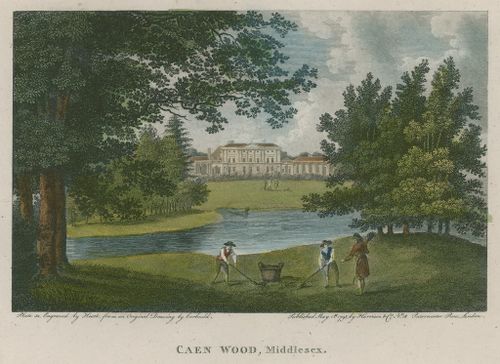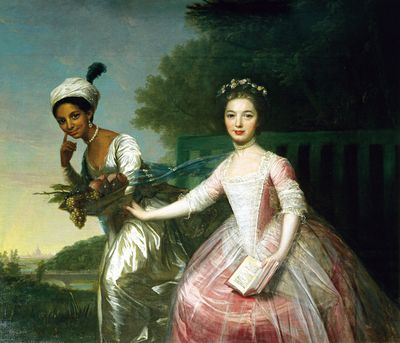Annotation:Caen Wood Dances: Difference between revisions
No edit summary |
No edit summary |
||
| Line 1: | Line 1: | ||
{{TuneAnnotation | {{TuneAnnotation | ||
|f_annotation=[[File:CaenWood.jpg|500px|left|thumb|Caen Wood, Middlesex]]'''CAEN WOOD DANCES.''' English, Country Dance Tune (2/4 time). A Major. Standard tuning (fiddle). AABB. Caen Wood, Middlesex, was the country seat of the | |f_annotation=[[File:CaenWood.jpg|500px|left|thumb|Caen Wood, Middlesex]]'''CAEN WOOD DANCES.''' English, Country Dance Tune (2/4 time). A Major. Standard tuning (fiddle). AABB. Caen Wood, Middlesex, was the country seat of the [[wikipedia:William_Murray,_1st_Earl_of_Mansfield]]. The Earldom of Mansfield in Nottingham was created in 1776 for the Scottish lawyer William Murray (1705-1793), who had held its barony since 1756, when he became Lord Chief Justice. In 1792, he also became Earl of Mansfield of Caen Wood, Middlesex. Between 1764 and 1779 Robert Adam transformed Caen Wood (now known as Kenwood) into a neoclassical villa for William Murray, 1st Earl of Mansfield, and the interiors include some of Adam’s finest surviving schemes. Murray had acquired Caen Wood for £4,000, and he and his wife, Elizabeth (Betty), née Finch (1704–84), used it as their weekend country villa. Lord Mansfield soon expanded the estate, and soon disposed of the former formal gardens. Some of the fishponds were merged to become Wood Pond and the Thousand Pound Pond was created, its name presumably reflecting the exorbitant cost of its creation. | ||
<br> | <br> | ||
<br> | <br> | ||
Latest revision as of 14:44, 13 July 2023
X:1 T:Caen Wood Dances. Tho24CDs1792.01 M:2/4 L:1/8 Q:1/4=120 C:"73" B:Thompson 24 CDs 1792 Z:Village Music Project, Chris Partington, 1999 & 2017 W:First Cu:hands 3 round with the 2nd Lady.| the same with the 2nd Gent:| W:Lead down thw middle, up again & cast off:|. Allemande with your W:partners:| K:A |:(EA)(Ac)|(BA)A2|(Ac)(ce)|(dc).c.e|fgaf|ecBA|GBdc|(c2B2):| |:EGBc|dBBd|cAec|(c2Bc)|defg|aedc|~BABc|(A2A2):|

Lady Mansfield wrote to her nephew in May 1757:
Kenwood is now in great beauty. Your uncle is passionately fond of it. We go thither every Saturday and return on Mondays but I live in hopes we shall now soon go thither to fix for the Summer.


